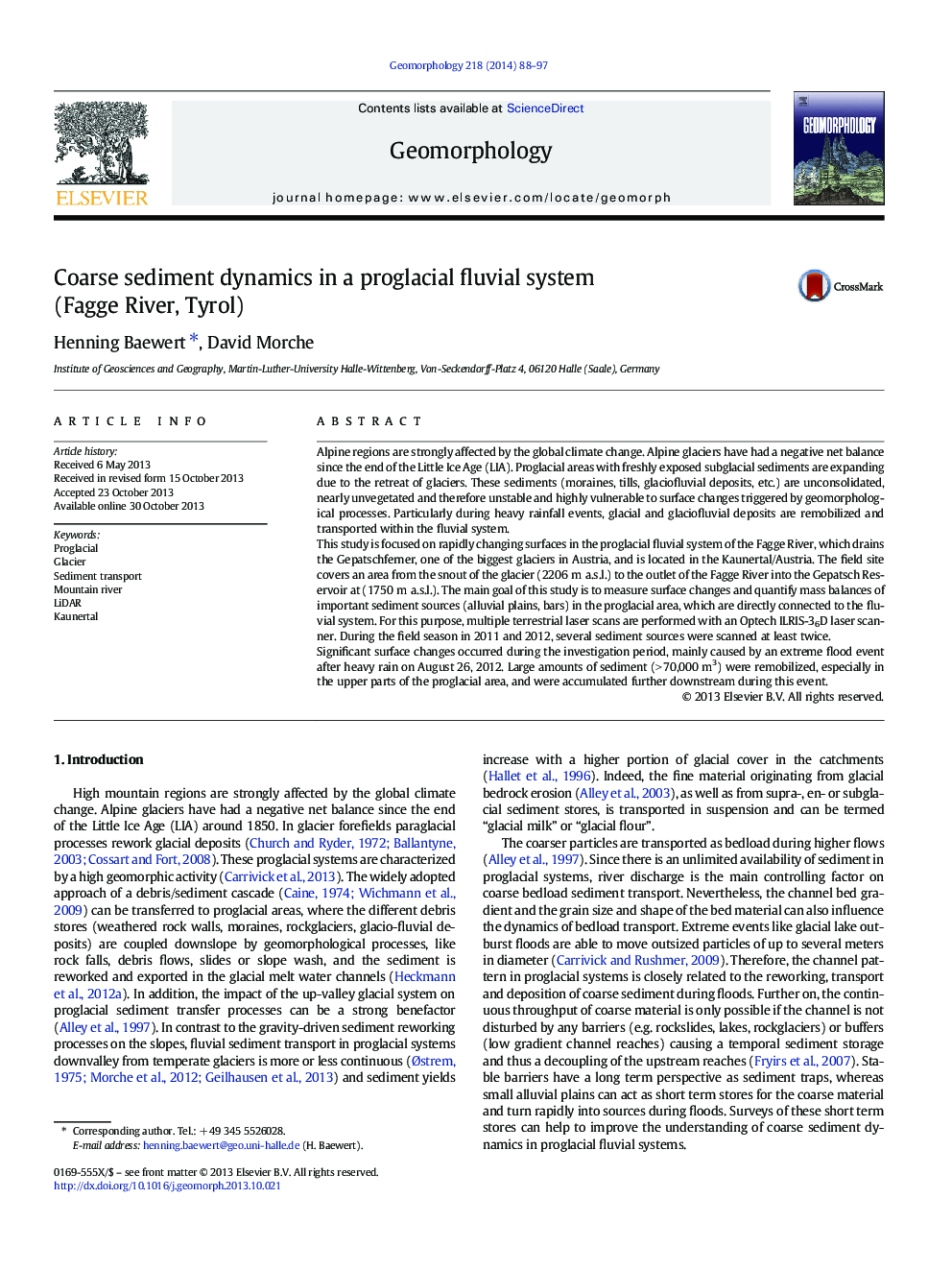| Article ID | Journal | Published Year | Pages | File Type |
|---|---|---|---|---|
| 4684494 | Geomorphology | 2014 | 10 Pages |
•We investigated coarse sediment transport in a proglacial area.•An extreme flood event caused major geomorphological changes along the stream bed.•In the proximal area of the glacier large amounts of sediment were eroded.•The sediment was deposited distal to the glacier in areas with lower slope.
Alpine regions are strongly affected by the global climate change. Alpine glaciers have had a negative net balance since the end of the Little Ice Age (LIA). Proglacial areas with freshly exposed subglacial sediments are expanding due to the retreat of glaciers. These sediments (moraines, tills, glaciofluvial deposits, etc.) are unconsolidated, nearly unvegetated and therefore unstable and highly vulnerable to surface changes triggered by geomorphological processes. Particularly during heavy rainfall events, glacial and glaciofluvial deposits are remobilized and transported within the fluvial system.This study is focused on rapidly changing surfaces in the proglacial fluvial system of the Fagge River, which drains the Gepatschferner, one of the biggest glaciers in Austria, and is located in the Kaunertal/Austria. The field site covers an area from the snout of the glacier (2206 m a.s.l.) to the outlet of the Fagge River into the Gepatsch Reservoir at (1750 m a.s.l.). The main goal of this study is to measure surface changes and quantify mass balances of important sediment sources (alluvial plains, bars) in the proglacial area, which are directly connected to the fluvial system. For this purpose, multiple terrestrial laser scans are performed with an Optech ILRIS-36D laser scanner. During the field season in 2011 and 2012, several sediment sources were scanned at least twice.Significant surface changes occurred during the investigation period, mainly caused by an extreme flood event after heavy rain on August 26, 2012. Large amounts of sediment (> 70,000 m3) were remobilized, especially in the upper parts of the proglacial area, and were accumulated further downstream during this event.
